Best distortion pedals 2025: the top 11 high-gain stompboxes for guitarists
Crunch, filth, mayhem! Dive into our expert round-up of the best distortion pedals available today
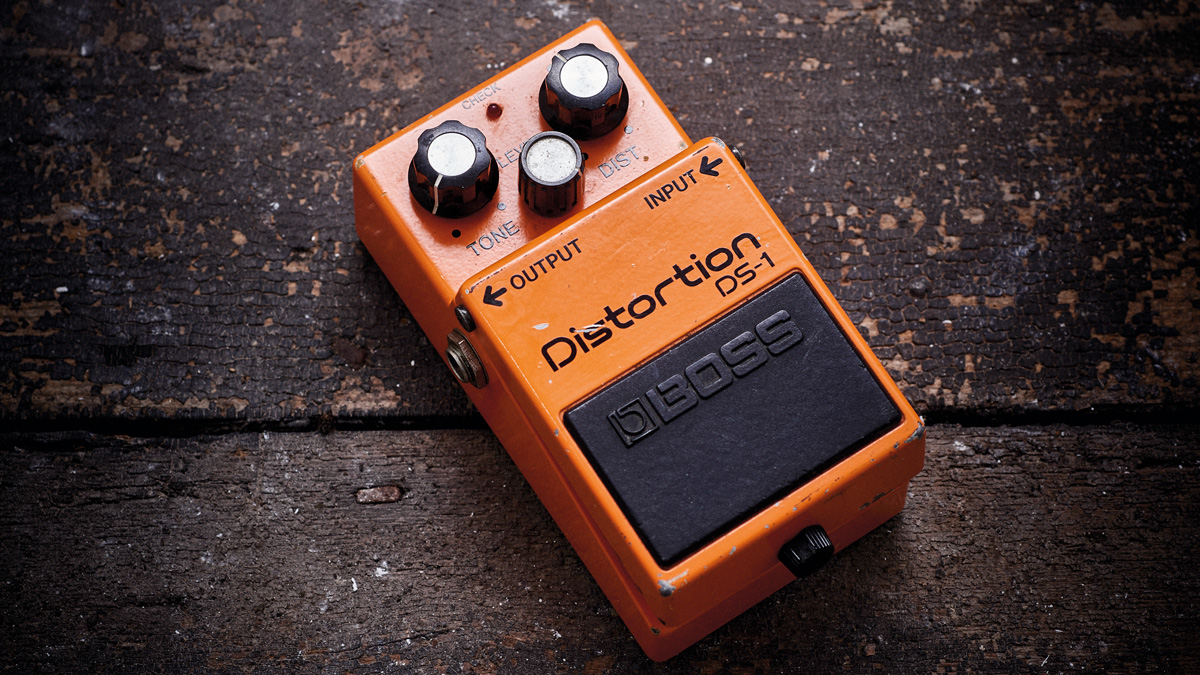
1. Quick list
2. Best overall
3. Best on a budget
4. Best premium
5. Best for rock
6. Best for punk
7. Best modern
8. More options...
9. Buying advice
10. How we choose
Distortion – most of us can't imagine guitar without it. There's something about turning pristine cleans into delicious dirt that still thrills us every time. Luckily then, we live in a golden age of guitar pedals, with all kinds of small-scale boutique stompbox manufacturers facing off against industry titans such as MXR, TC Electronic and Boss, meaning if you're looking for the best distortion pedal to help you achieve tonal bless, there's more choice than ever before.
When used right, there's nothing like the roar of an amp getting totally shredded by a distortion pedal, and as a result, it's come to define many genres, from metalcore to Swedish death metal, hard-rock to punk. This hard-clipping effect has captured the hearts of many players, whether that's bedroom warriors dreaming of the sound of a totally dimed Peavey stack or the gigger looking to push their gain tone into the stratosphere.
The question is, where do you start? Well, the honest answer is 'try a ProCo RAT and go from there,' but if you want a longer read, then we've rounded up some of our favorites below. Of course, our intelligent price widgets have also scoured the internet for the best deals.
We've included some in-depth buying advice at the end of this guide, so if you'd like to read it, click the link. If you'd like to get straight to the products, keep scrolling.
Best distortion pedals: Quick list
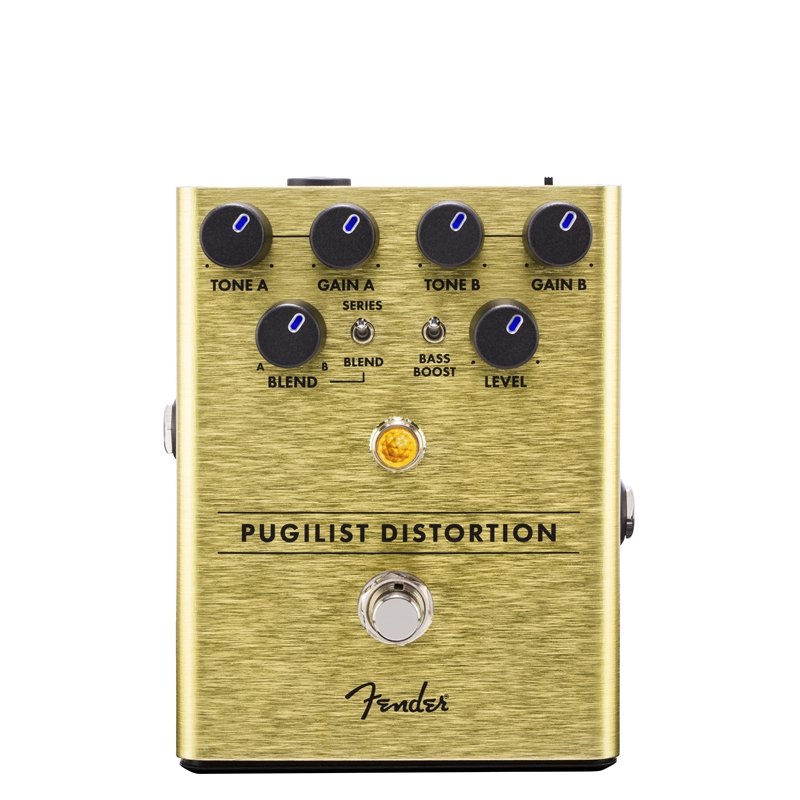
Fender have stacked the Pugilist with all the gain you need, and even if it takes a bit of time to dial in your desired setting and negotiate the two gain channels via the blend, there’s so much joy to be had. Yes, it can function as an overdrive, but we’re on the hunt for the best distortion pedals, and the Pugilist understands this, with oodles of gain that can be shaped to react to your pickups.
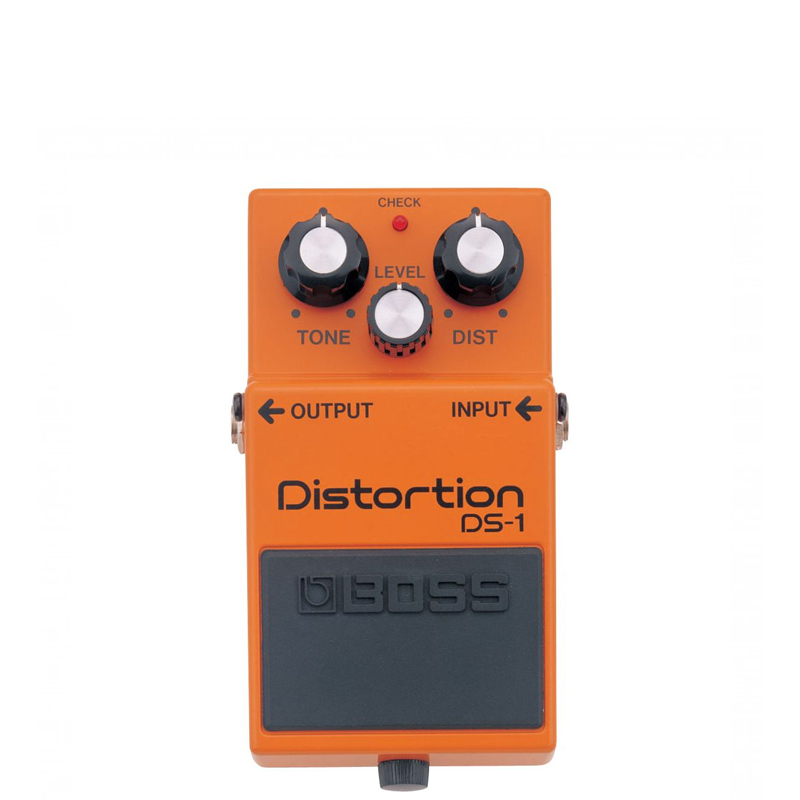
The Boss DS-1’s set-up is simple: level, tone and distortion, with a rubber-topped foot pedal to switch it on and off. The pedal is happy adding a little crunch and some extra oomph, but it keeps the integrity of your guitar tone steady when dimed. There’s plenty of versatility. The DS-1’s tone knob really can tweak your highs, perfect for pinch harmonics. Dial it back to thicken up your rhythm tone or to fatten up single coil pickups.
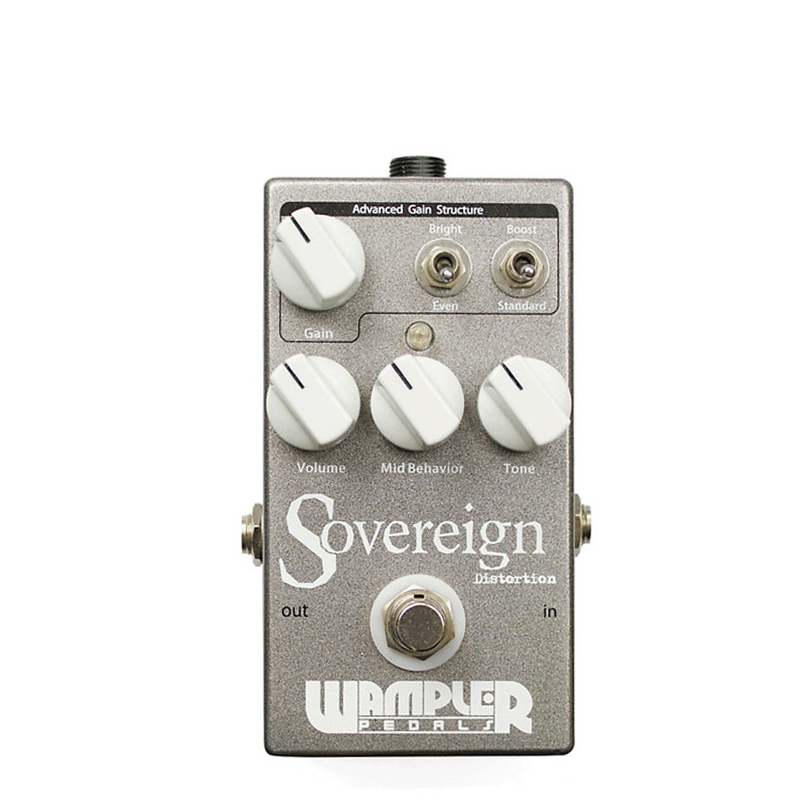
Brian Wampler has packed a heap of features into a small enclosure here. The Sovereign could probably fight in the overdrive category but has so much beef in its gain structure that goes way beyond. The Sovereign’s controls have changed name through the years – from “mid behavior” to “mid contour” but their mastery over the pedal’s midrange and highs is ever reliable. The pedal’s soul lies in that mid-contour.

Like the Sovereign, the M75 has a default voice that speaks in British EL34 tube crunch. Keep everything at noon to maintain that sort of equilibrium, but if you’re chasing heaps of ugly-delicious metal gain, roll it forward to 2 o’clock onwards. The three-band EQ is everything in changing the character of the M75’s gain.

Developed in 1978, and mass produced from 1979 onwards, the ProCo RAT has a decent claim to being the first proper mass-market distortion box. Its hard, aggressive sound and tight, focussed clipping are pretty much the template for what distortion sounds like to this day. If you're looking for the punchy tone of players like Radiohead's Johnny Greenwood, then the RAT is a good choice. They of course used a Marshall Shredmaster - now long discontinued - but the RAT can cover most of the same ground.
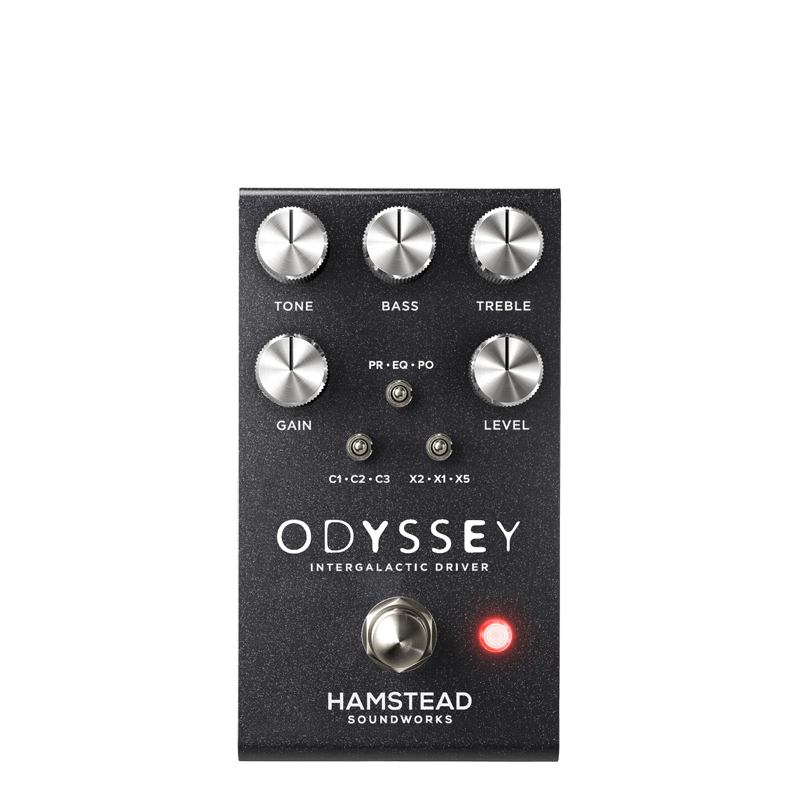
At face value, the Odyssey is a RAT on steroids. Like the RAT, it's got a wide gain range, with seriously crunchy tones when fully open. However, that's a very superficial, 'guitar-store test' take. Not only does the Odyssey pack a true amp-like EQ, but there's also ordering and input gain options to change its operation to be even more flexible. The clipping settings allow it to go from pure transparent clean boost, to heavy distortion.
Best distortion pedal overall
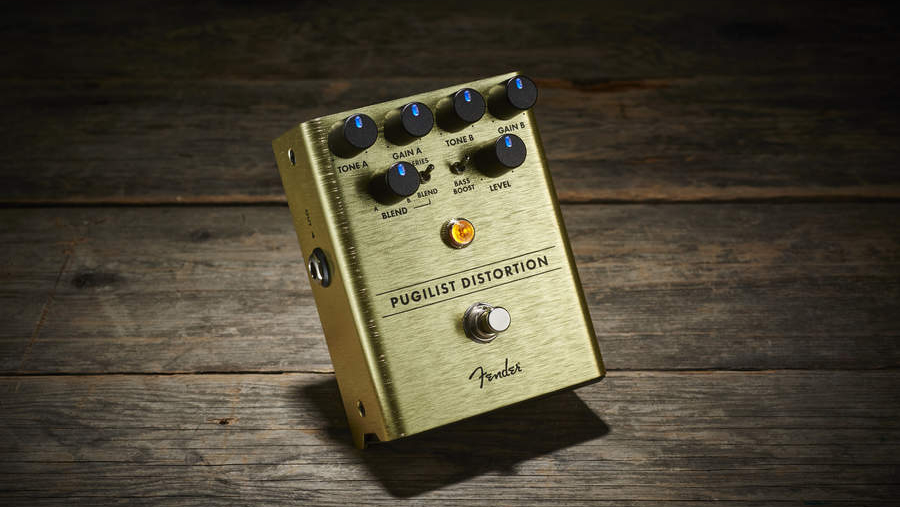
1. Fender Pugilist Distortion Pedal
Our expert review:
Specifications
Reasons to buy
Reasons to avoid
Fender have stacked the Pugilist with all the gain you need, and even if it takes a bit of time to dial in your desired setting and negotiate the two gain channels via the blend, there’s so much joy to be had.
Yes, it can function as an overdrive, but we’re on the hunt for the best distortion pedals, and the Pugilist understands this, with oodles of gain that can be shaped to react to your pickups.
Mode A is more overdrive/crunch; Mode B saturates the tone for a more modern metal tone, while the bass boost is excellent for fattening up single coil tones.
Read our full Fender Pugilist Distortion Pedal review
Best distortion on a budget
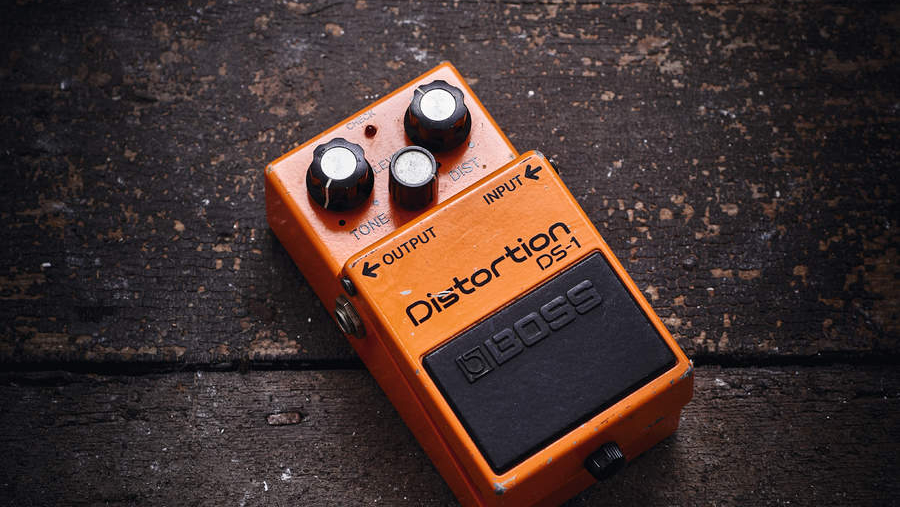
2. Boss DS-1 Distortion Pedal
Our expert review:
Specifications
Reasons to buy
Reasons to avoid
The Boss DS-1’s set-up is simple: level, tone and distortion, with a rubber-topped foot pedal to switch it on and off. The pedal is happy adding a little crunch and some extra oomph, but it keeps the integrity of your guitar tone steady when dimed.
There’s plenty of versatility. The DS-1’s tone knob really can tweak your highs, perfect for pinch harmonics. Dial it back to thicken up your rhythm tone or to fatten up single coil pickups.
What's not to like about all this tone for under 50 bucks? Just don’t underrate it just because it’s cheap and pre-dates the Sony Walkman.
Best premium
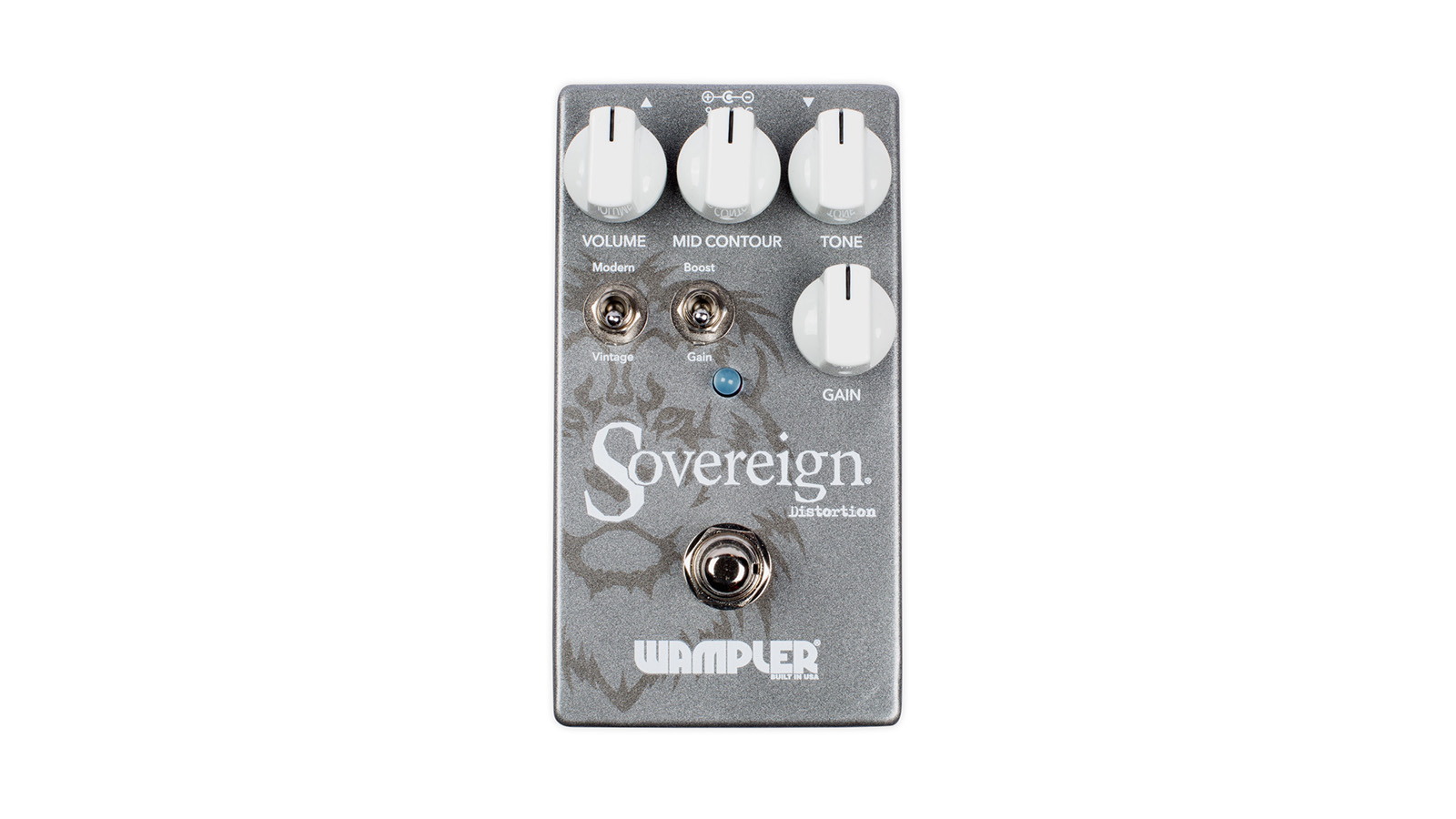
3. Wampler Sovereign Distortion
Our expert review:
Specifications
Reasons to buy
Reasons to avoid
Brian Wampler has packed a heap of features into a small enclosure here. The Sovereign could probably fight in the overdrive category but has so much beef in its gain structure that goes way beyond.
The Sovereign’s controls have changed name through the years – from “mid behaviour” to “mid contour” but their mastery over the pedal’s midrange and highs is ever reliable. The pedal’s soul lies in that mid contour.
The even/bright switch lets you toggle between more of a mids-heavy sound and top-heavy treble, while the standard/boost chooses between responsive overdriven tones and more gnarly levels of gain.
Best for rock
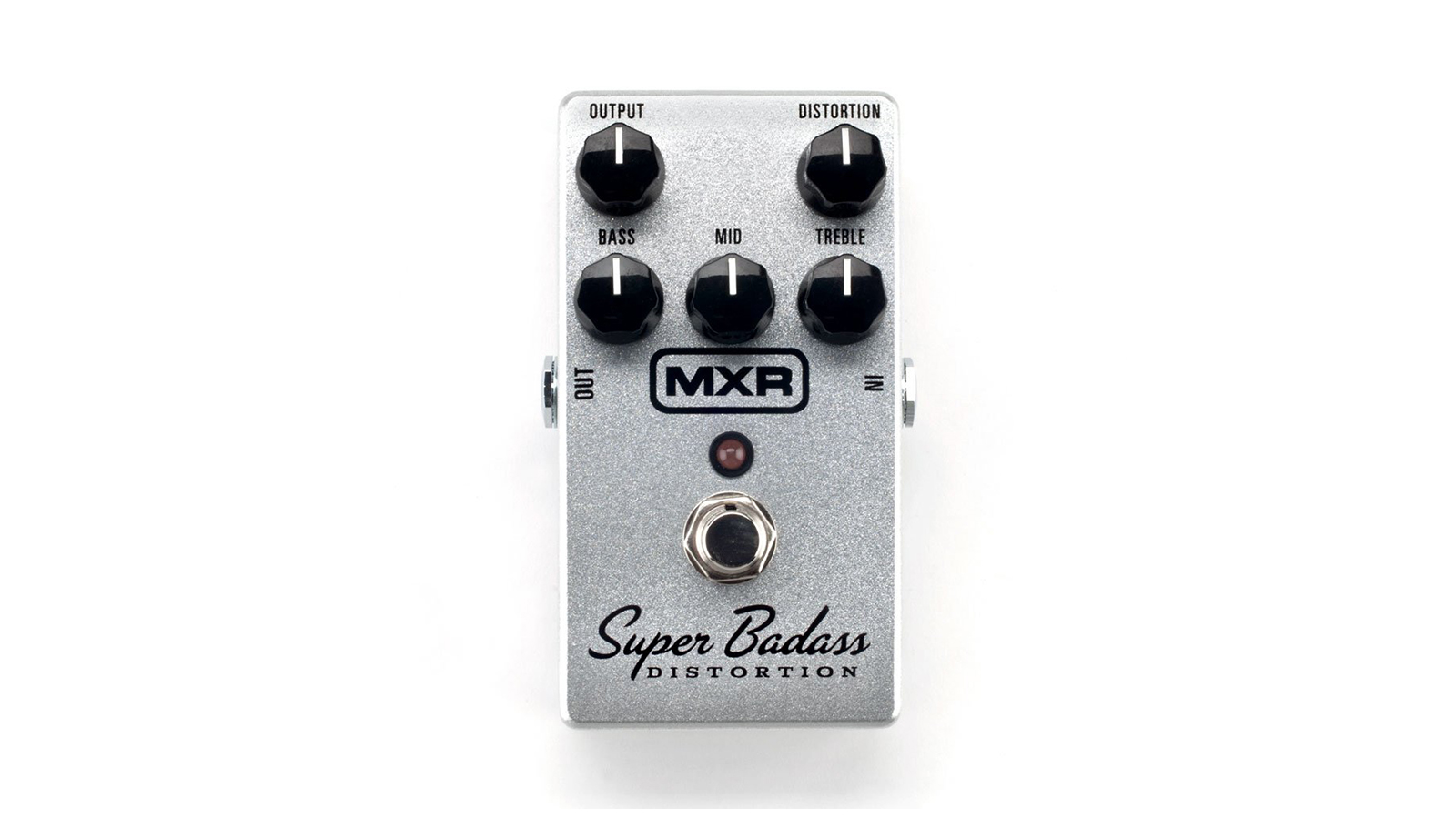
4. MXR M75 Super Badass '75 Distortion
Our expert review:
Specifications
Reasons to buy
Reasons to avoid
Like the Sovereign, the M75 has a default voice that speaks in British EL34 tube crunch. Keep everything at noon to maintain that sort of equilibrium, but if you’re chasing heaps of ugly-delicious metal gain, roll it forward to 2 o’clock onwards.
The three-band EQ is everything in changing the character of the M75’s gain. Take out some of those mids for late ’80s Metallica scooped crunch, boost them for that ‘70s vibe.
When it comes to the best distortion pedals, the M75 is a no-brainer that takes seconds to find the tone you want – an indestructible little powerhouse of versatile analog distortion. It's also worth noting that it pairs especially well with one of the best phasers of all time the MXR Phase 90.
Read the full MXR M75 Super Badass '75 Distortion review
Best for punk
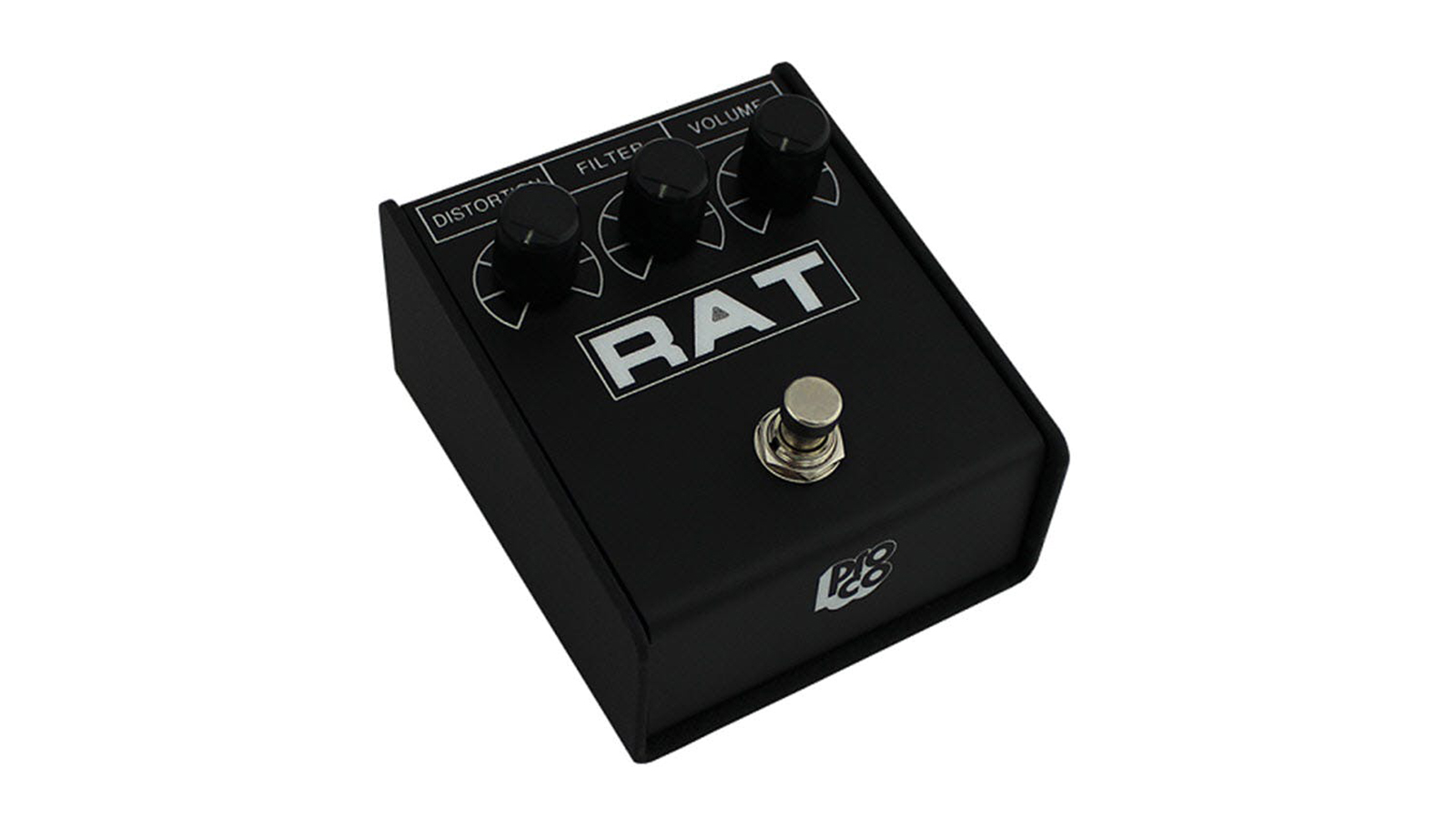
5. ProCo Rat 2
Our expert review:
Specifications
Reasons to buy
Reasons to avoid
Developed in 1978, and mass produced from 1979 onwards, the ProCo RAT has a decent claim to being the first proper mass-market distortion box. Its hard, aggressive sound and tight, focussed clipping are pretty much the template for what distortion sounds like to this day. If you're looking for the punchy tone of players like Radiohead's Johnny Greenwood, then the RAT is a good choice. They of course used a Marshall Shredmaster - now long discontinued - but the RAT can cover most of the same ground.
Although it does sound the best at higher gain settings, it can be used as a lower-gain boost, even if it never fully cleans up in the way an overdrive might.
The only real drawback of the modern ProCo RAT is that the op-amp at the heart of the circuit is no longer the original LM308. On the original, the slow slew rate of the op-amp created a distinctive, almost triangle-wave waveform at higher gain levels. However, the hard clip of the diodes means that the difference in reality is more marginal than some claim.
Best distortion for modern tone
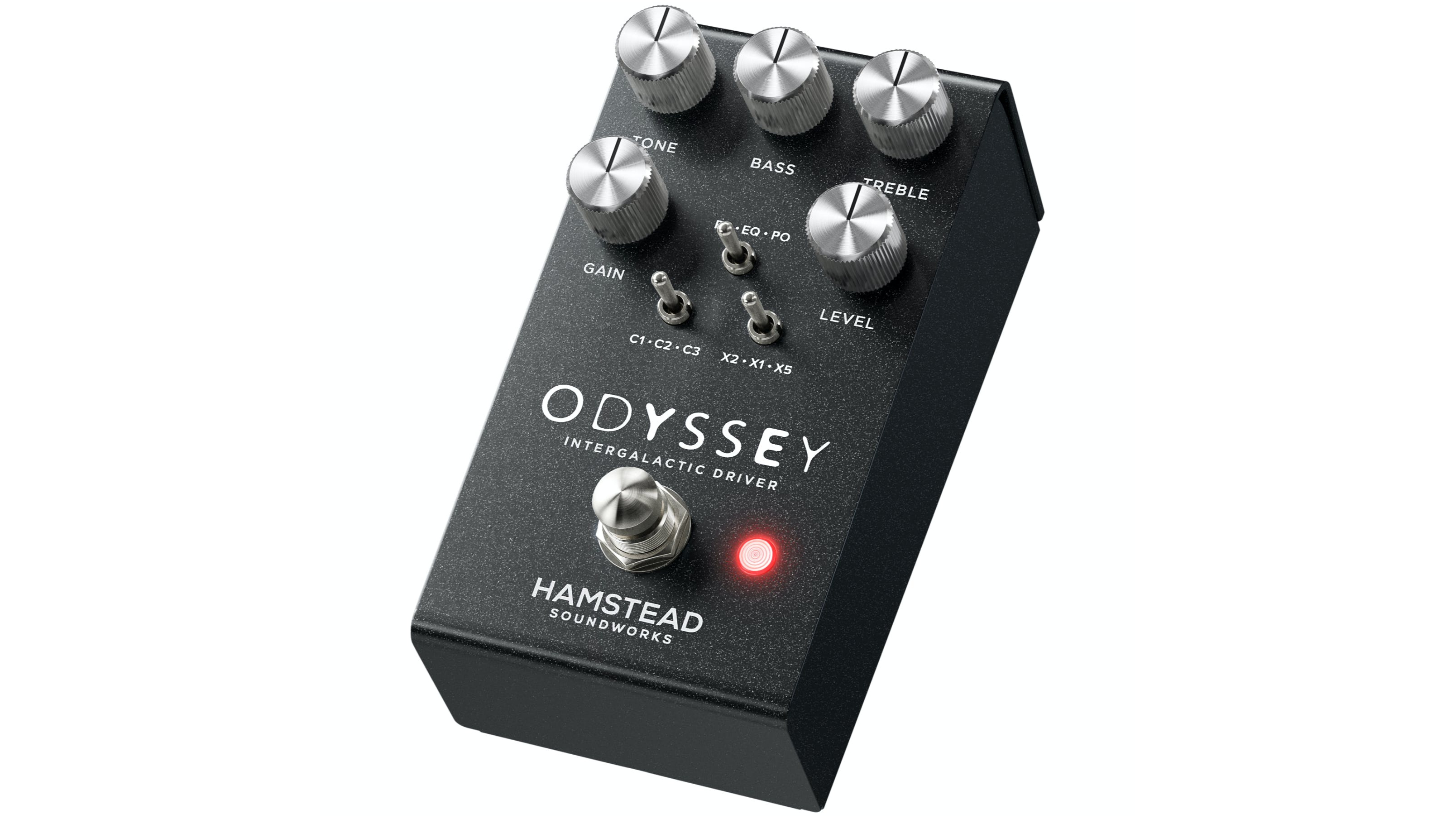
6. Hamstead Odyssey
Our expert review:
Specifications
Reasons to buy
Reasons to avoid
At face value, the Odyssey is a RAT on steroids. Like the RAT, it's got a wide gain range, with seriously crunchy tones when fully open. However, that's a very superficial, 'guitar-store test' take.
Not only does the Odyssey pack a true amp-like EQ, but there's also ordering and input gain options to change its operation to be even more flexible. The clipping settings allow it to go from pure transparent clean boost, to heavy distortion.
It pairs well with preamps, real amps, and other gain stages on your pedalboard, and remains one of the easiest recommendations of any gain pedal on the market.
More options...
So those are our top picks, but there are many more great options to choose from that offer something a little different in terms of features and performance. We've selected some more of our favorites below.
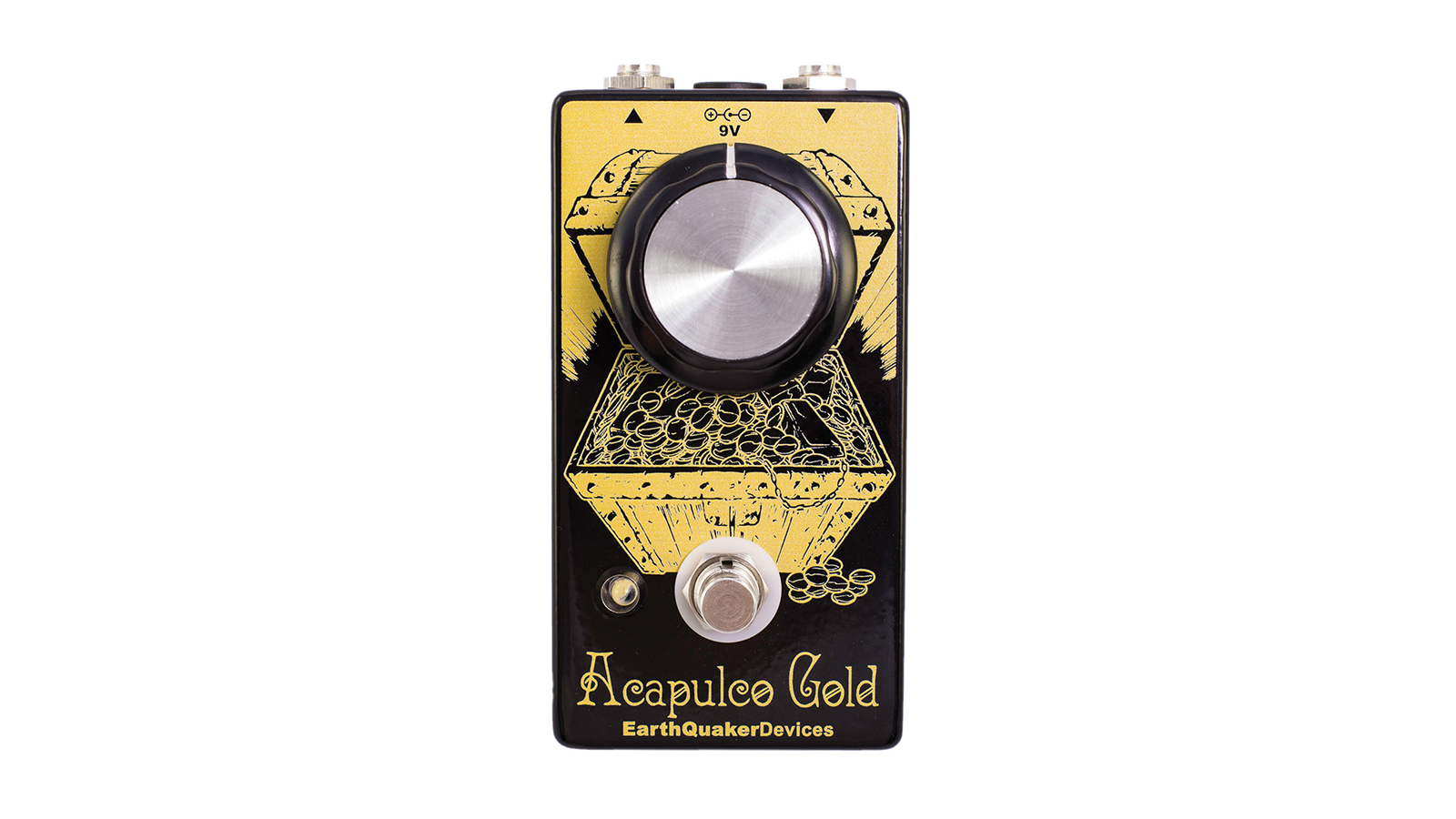
7. EarthQuaker Devices Acapulco Gold V2
Our expert review:
Specifications
Reasons to buy
Reasons to avoid
The Acapulco Gold is dominated by giant output volume knob and its brief is devastatingly simple: to bring the power and tone of a Sunn Model T amp and house it inside a small pedal.
And it works: at low volumes, say, 9 o’clock on the dial, this works as a neat little overdrive, but keep turning it clockwise and the gain – and the volume – keeps coming. The final destination is a thick, fat and open distortion, with a little fuzz overtones, that makes for amazing ‘70s metal tones.
Adjust your guitar’s tone knob to tease different voicings from the pedal. And wear earplugs.
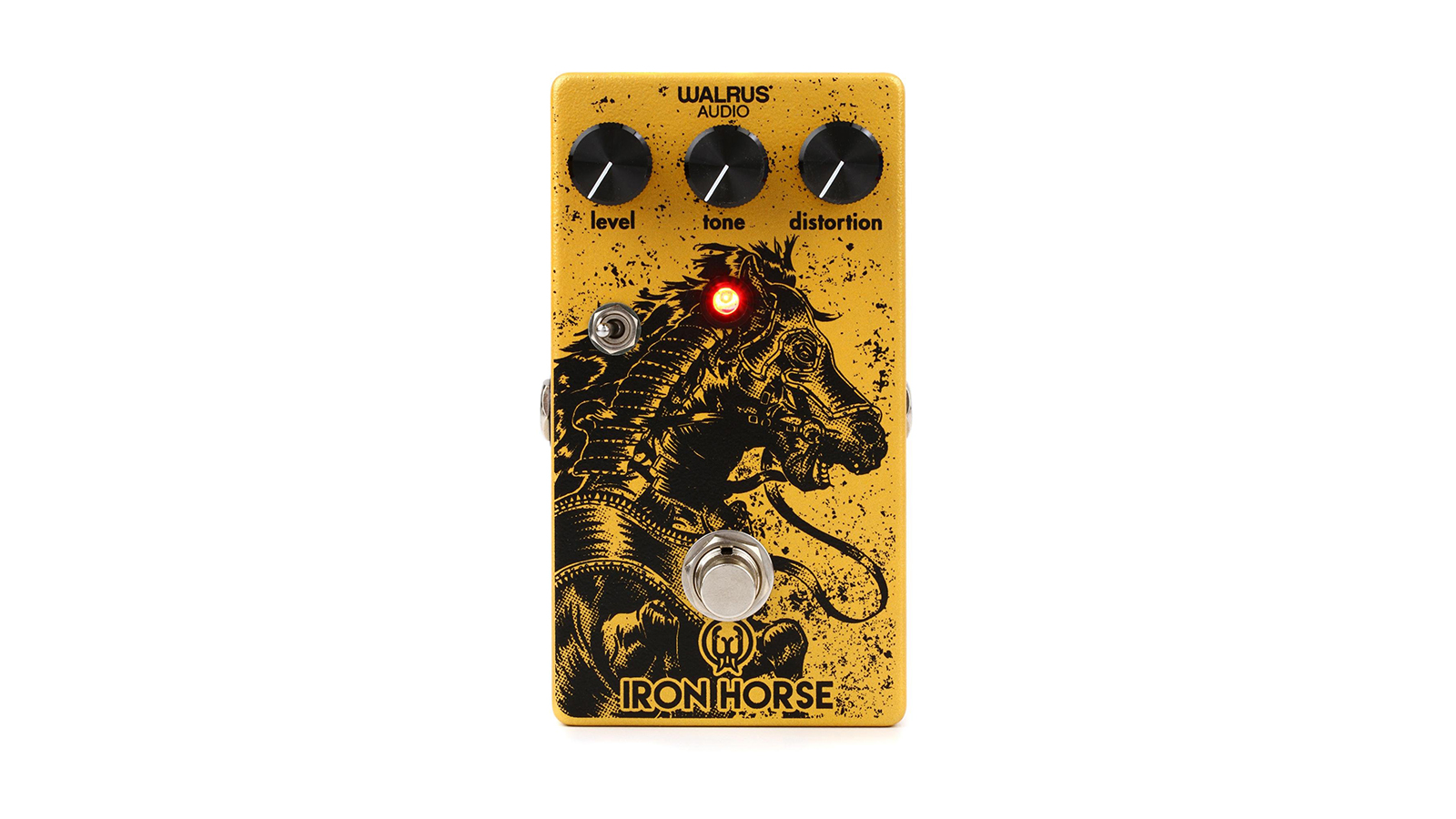
8. Walrus Audio Iron Horse LM308 V2
Our expert review:
Specifications
Reasons to buy
Reasons to avoid
The Iron Horse V2 sees the unit updated with a more dynamic tone control and a new level control that makes it easier to dial in unity gain (i.e. when the pedal’s output level is the same as when it isn’t in the signal chain). The distortion circuit has been tweaked too for more subtle low-gain tones.
Key features include the three-way toggle switch that selects between clipping diodes letting you choose from slightly compressed to more compressed and totally open distorted tones.
The enclosure is finished with some neat artwork from illustrator Adam Forster. We’d love to see a craft beer tie-in.
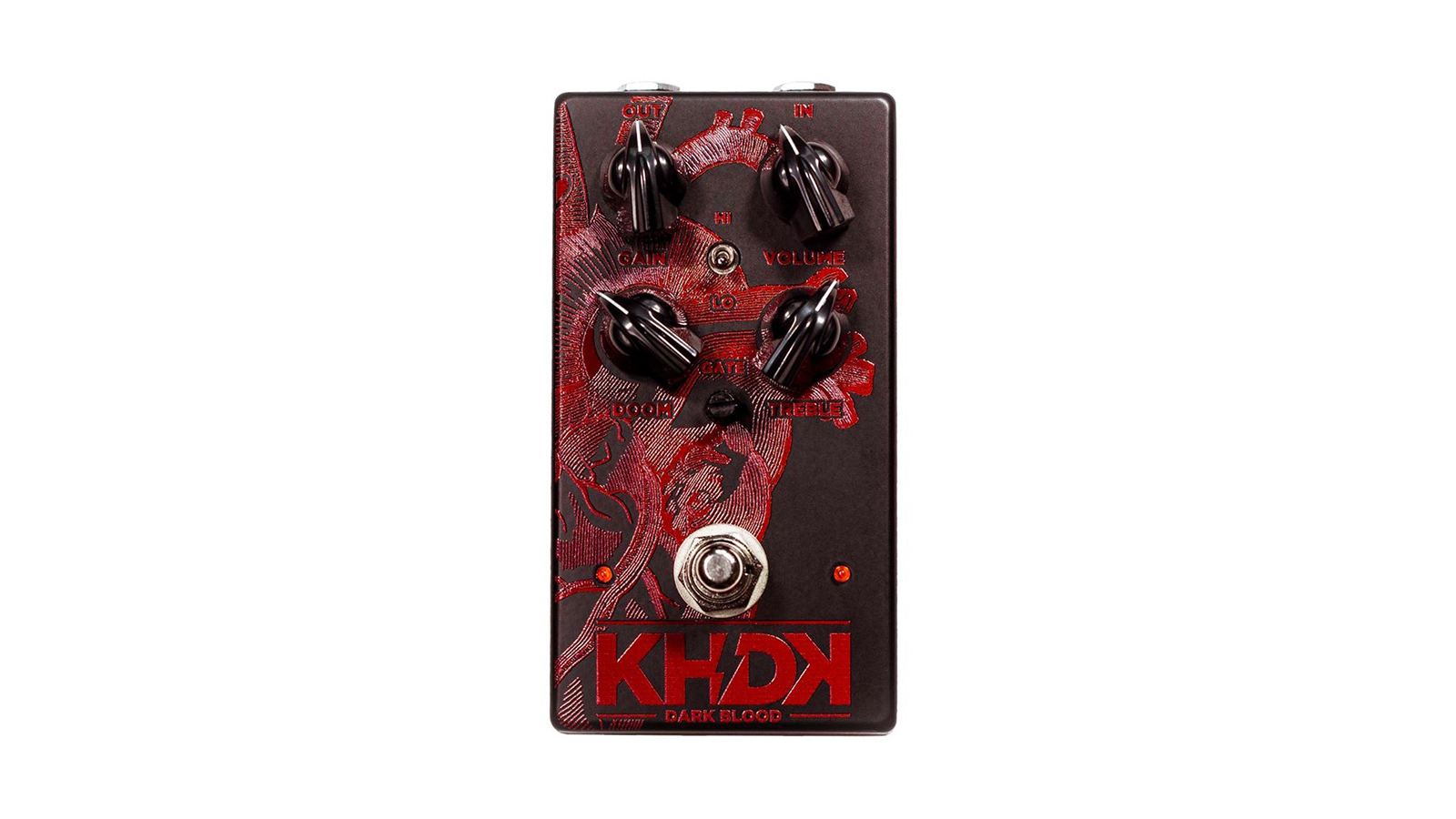
9. KHDK Dark Blood Distortion Pedal
Our expert review:
Specifications
Reasons to buy
Reasons to avoid
Metallica’s flamboyant lead guitarist knows his way around a distorted metal tone and the Dark Blood is one of the best distortion pedals thanks to a hefty tone modeled in the high-gain American tube amp style.
The gain is tight and thick, with plenty of bass response courtesy of the appropriately named “doom” control, which intuitively shapes your low-end.
You can find some really devastating rhythm tones setting the hi/lo switch to lo and tweaking said “doom” setting, but an onboard noise suppressor keeps things sane and there are plenty of sparkling highs to be dialled in on what is a great all-rounder distortion pedal for metal.

10. TC Electronic Eyemaster Metal Distortion
Our expert review:
Specifications
Reasons to buy
Reasons to avoid
Another small enclosure pedal of simple design housing an enormous and classic metal distortion tone: it must be a Boss? No, but the Eyemaster, named after the Entombed song, is unashamedly channeling the dimed Boss HM-1 Heavy Metal with equally dimed Peavey Bandit for that classic Swedish death metal sound.
Designed and built in Denmark, this pedal is indestructible, but it comes with a three-year warranty just in case.
Push it all the way for death metal nastiness, dark, raw fuzz energy. There’s just gain and level to play with, but relax, TC Electronic fixed the tone. They know why you’re here; you took the left hand path.
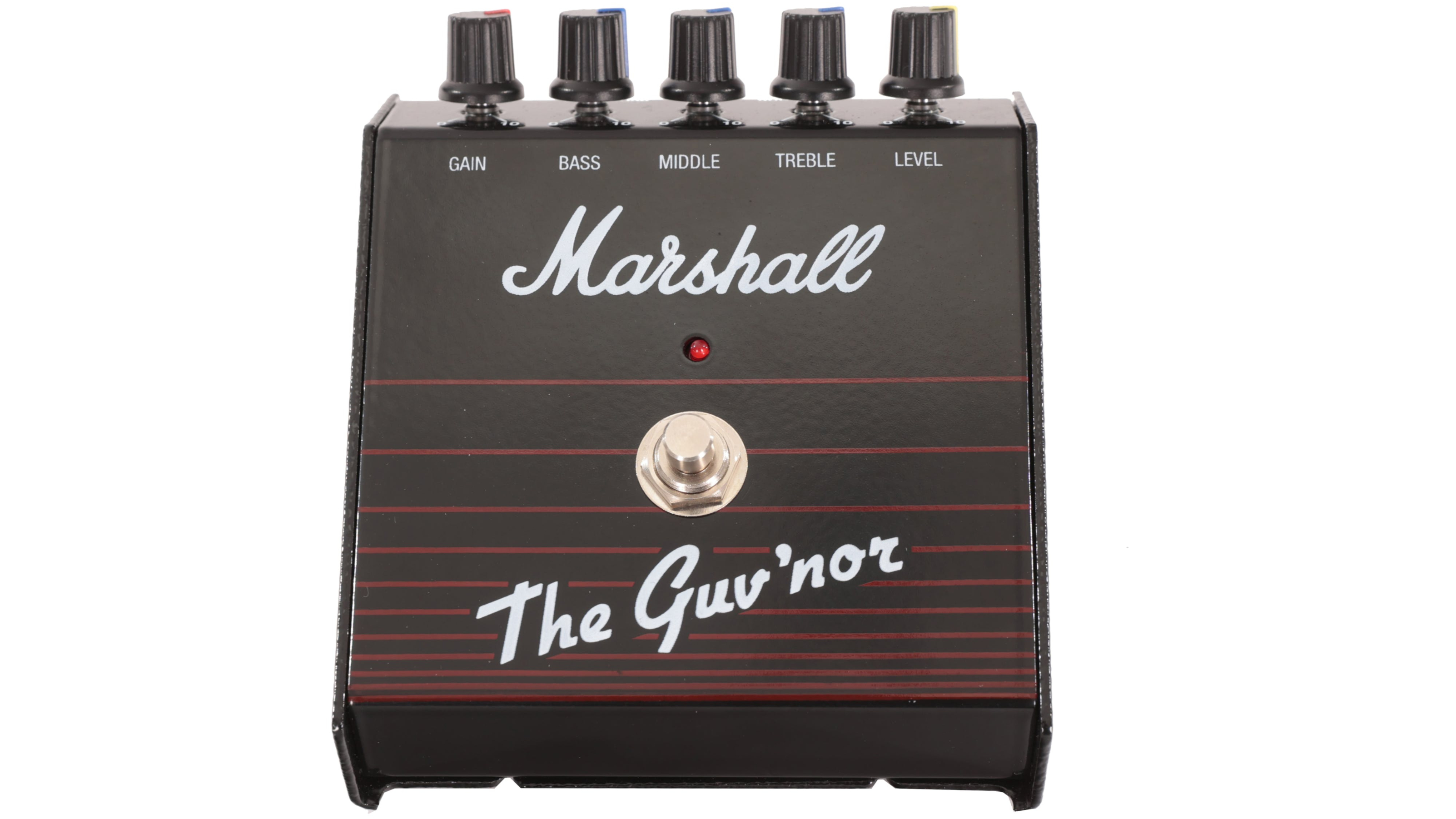
11. Marshall Guv'nor
Our expert review:
Specifications
Reasons to buy
Reasons to avoid
One of the first true amp-in-a-box distortions, the Guv'nor was Marshall applying its amp building nouse to a stompbox. The result was the flexible and articulate Guv'nor pedal. Recently reissued, it can hang with anything that's come out since, and is guaranteed to put a smile on your face. Crucially, it's a better unit than the original, replacing the problematic pots and footswitch while keeping the aesthetics.
The Guv'nor was the first in the wedge-shaped range that would eventually include the iconic Shred Master, Drive Master and Blues Breaker. Interestingly, the Drive Master was essentially the same pedal, with a couple of minor component changes and no effects loop.
Comparing them reveals the Drive Master is slightly more compressed, but arguably looks cooler. The Drive Master is also usually available cheaper, so it's a good alternative if you don't need the effects loop.
Best distortion pedals: Buying advice

What is distortion?
You can trust Guitar World
So, what do we mean by distortion, and how might this affect your hunt for the best distortion pedal? A distortion pedal uses hard-clipping to transform your clean guitar signal into a filthy, gritty mass of pure joy. Now, while this buyer's guide focuses on distortion pedals, naturally, there's some overlap between distortion, overdrive, and fuzz pedals, as all of them are effectively designed to dirty up your tone. Where overdrive doesn't change the fundamental character of your guitar's signal, distortion can be considered more aggressive. It clips your signal harder – and fuzz clips it harder still.
As with anything with an aesthetic purpose, gear, and how it sounds is subjective. There are no rules so long as the tone speaks to you - and ultimately, that's the most important thing to consider.
What style of distortion is right for you?
Just like chorus, delay, or reverb pedals, each individual distortion has its own unique tone and characteristics. But, deciding on which distortion is right for you really depends on the style of music you want to play. In the world of heavy metal, distortion is the most-prized raw material. For many metal guitar players, the ideal pedal delivers a thick, saturated distortion with a tight and controlled low end.
If you are playing towards metal's extremes, you'll obviously require a whole heap of gain, but you'll also want tone-shaping controls such as a variable mid control to ensure you can dial in the exact sound you need to be heard of the blistering drums and thunderous bass. Some scenes, such as early '90s Stockholm death-metal, coalesced around a single distortion pedal, the famed Boss HM-2 – they dimed everything, and it sounded horrible but brilliant in its own unique way.
For the less severe styles of music, such as punk and hard-rock, you may want to seek a more open-sounding distortion. For these genres, you can afford to opt for a distortion pedal that has more of a mid-range punch, as opposed to the scooped mids the metalheads seem to favor.
How we choose products
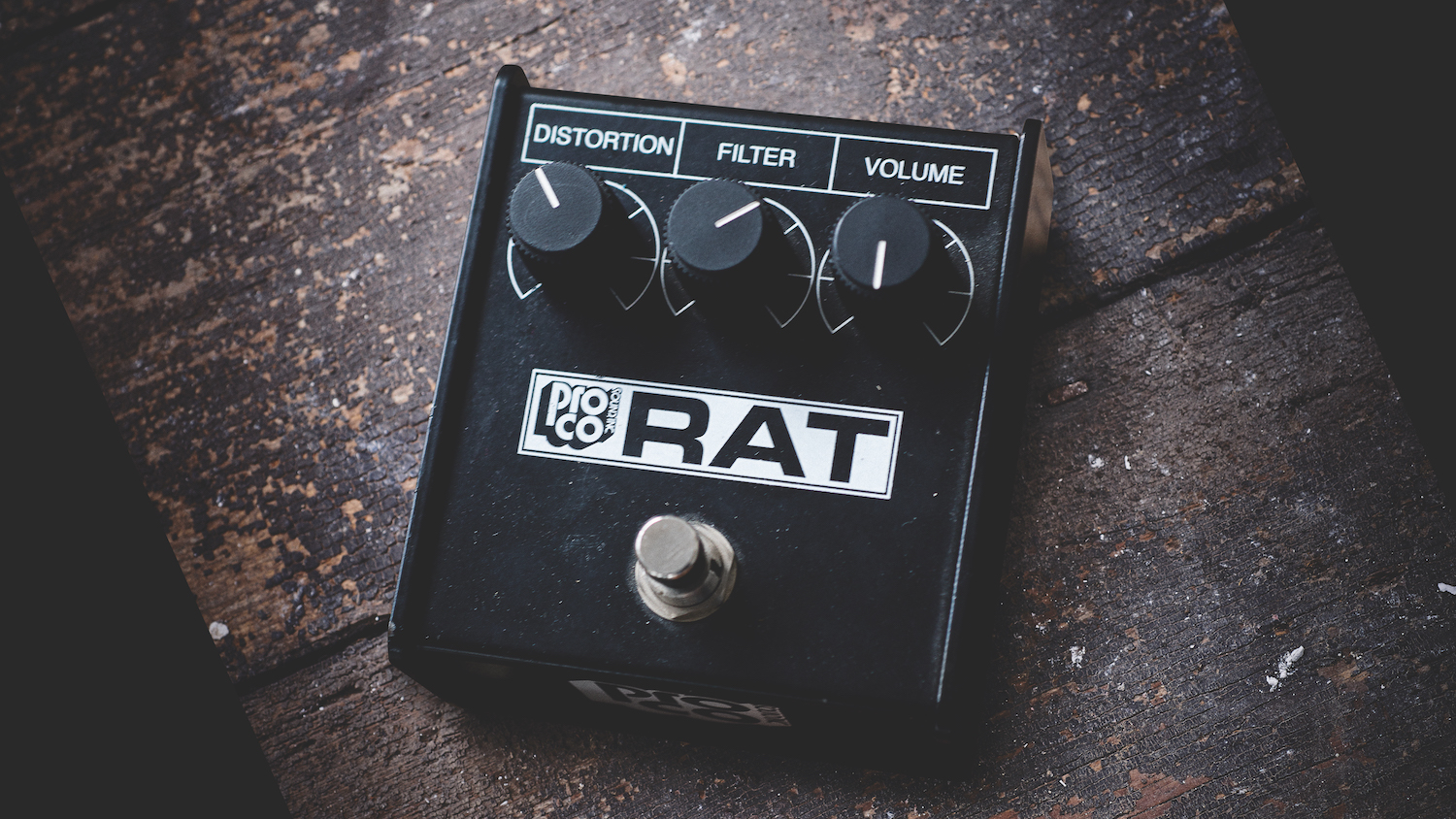
Here at Guitar World, we are experts in our field, with many years of playing and product testing between us. We live and breathe everything guitar and bass related, and we draw on this knowledge and experience of using products in live, recording and rehearsal scenarios when selecting the products for our guides.
When choosing what we believe to be the best distortion pedals available right now, we combine our hands-on experience, user reviews and testimonies and engage in lengthy discussions with our editorial colleagues to reach a consensus about the top products in any given category.
First and foremost, we are guitarists, and we want other players to find the right product for them. So we take into careful consideration everything from budget to feature set, ease of use and durability to come up with a list of what we can safely say are the best distortion pedals on the market right now.
Read more about our rating system, how we choose the gear we feature, and exactly how we test each product.
Related buyer's guides
- You might need one of the best pedalboard power supplies, too
- Make a connection with the best patch cables on the block
- Get top-notch sound with the best amps for pedals
- Check out the best Tube Screamer clones
- Get all wobbly with the best tremolo pedals
- Our pick of the best Klon clones for every budget
- On a budget? Here are the best cheap distortion pedals
- Play it loud with the best punk guitars
- Lose your head in the best headless guitars
- Expand your playing style with the best Boss pedals
All the latest guitar news, interviews, lessons, reviews, deals and more, direct to your inbox!
Jonathan Horsley has been writing about guitars since 2005, playing them since 1990, and regularly contributes to publications including Guitar World, MusicRadar and Total Guitar. He uses Jazz III nylon picks, 10s during the week, 9s at the weekend, and shamefully still struggles with rhythm figure one of Van Halen’s Panama.
- Alex Lynham
- Daryl RobertsonSenior Deals Writer

